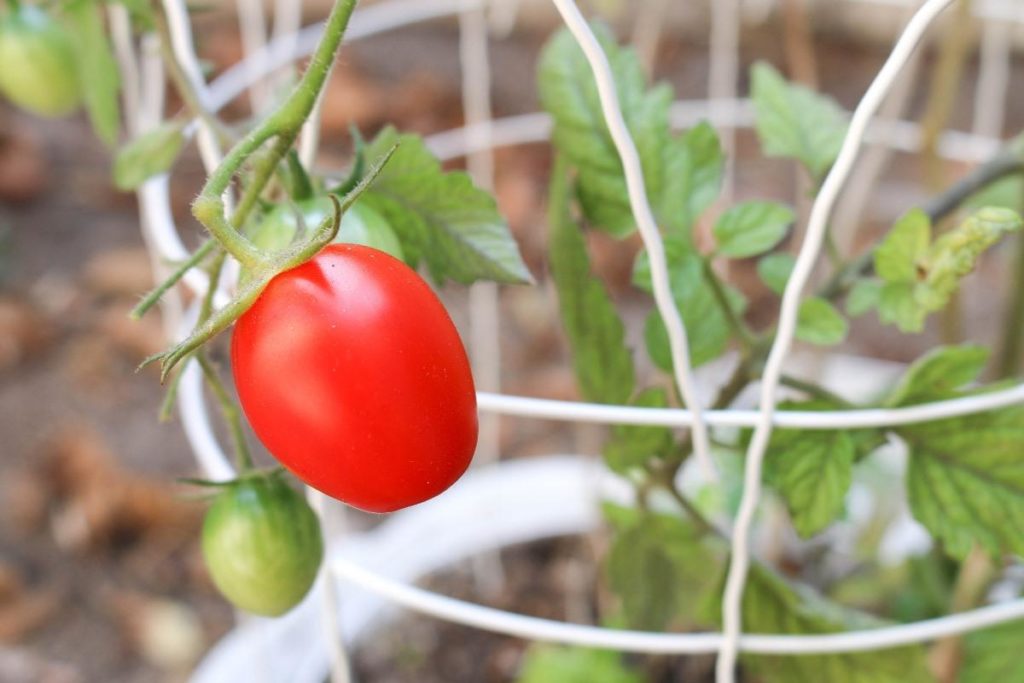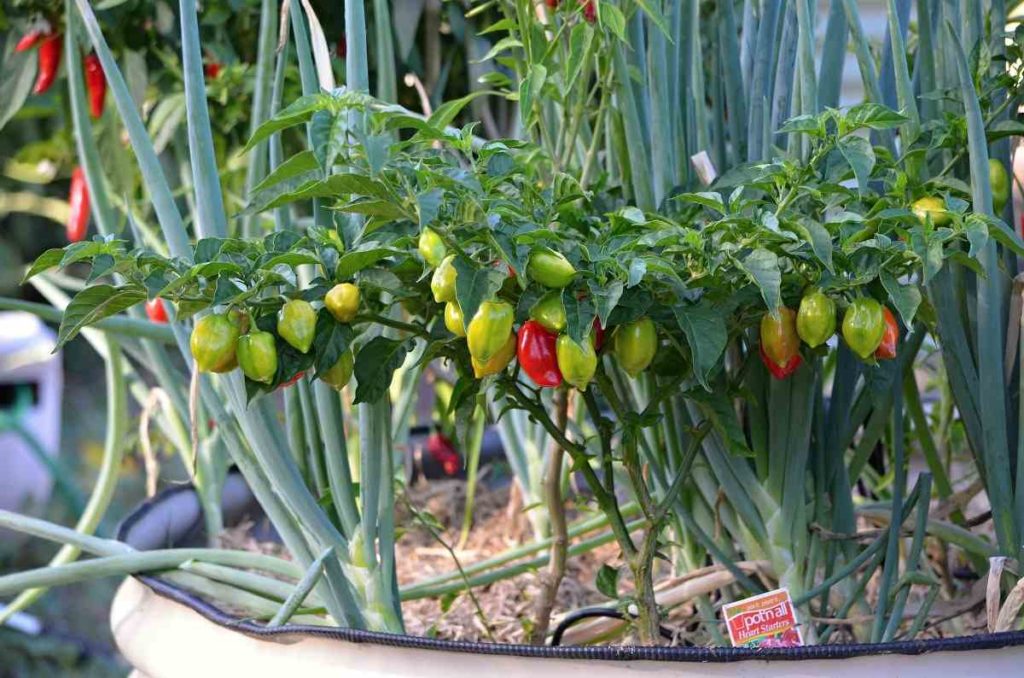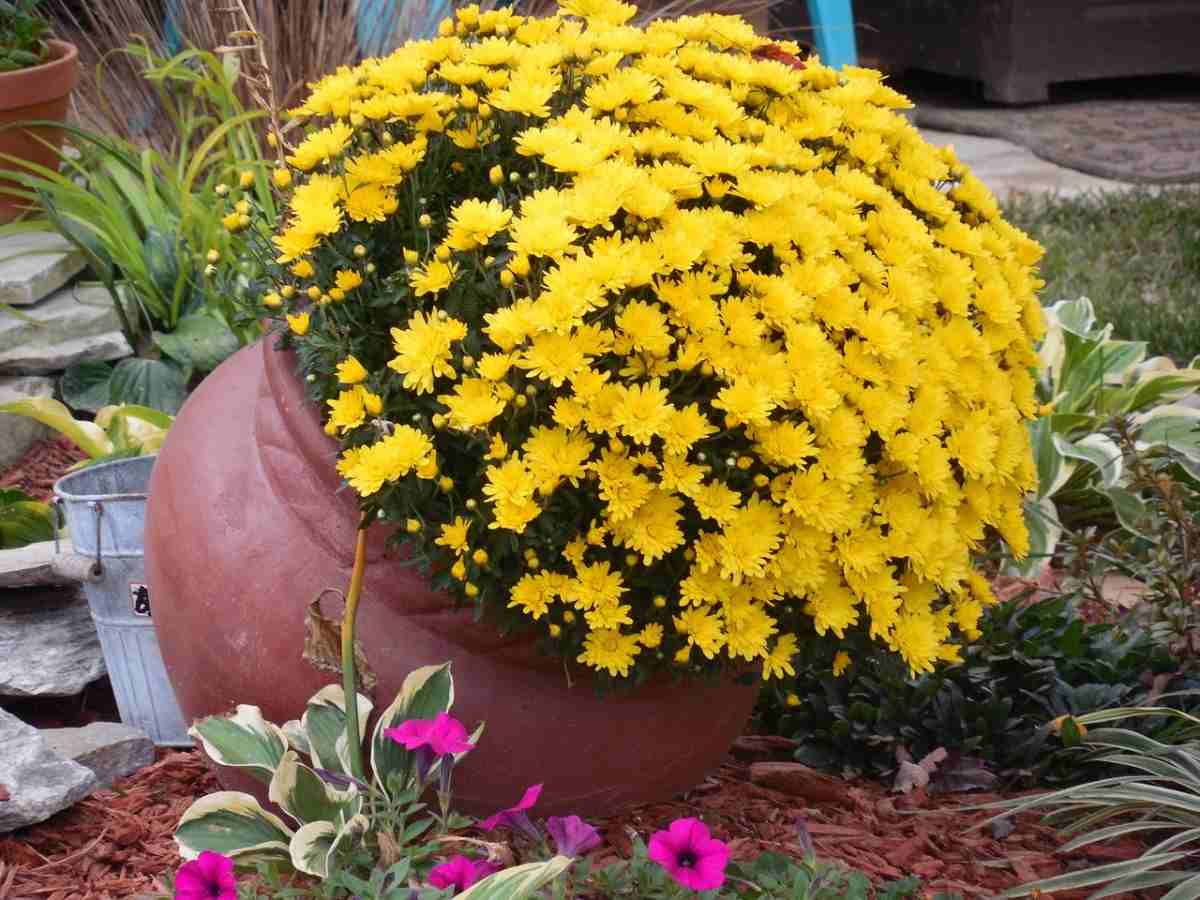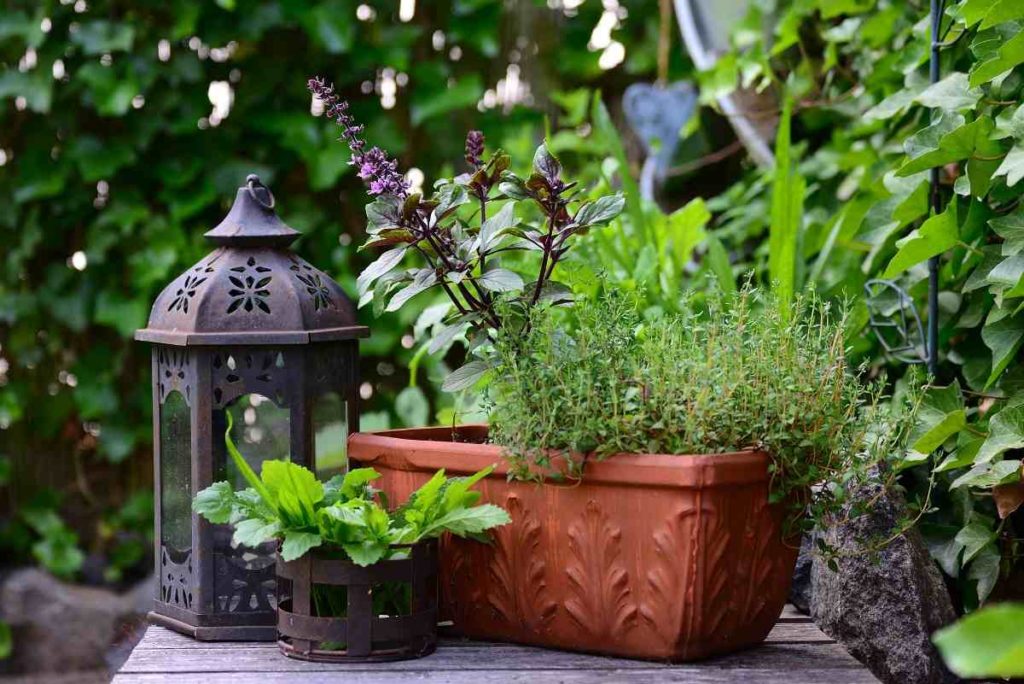Container Gardening For Beginners
Here, today we are going to know about Container Gardening for beginners and several other topics about Container Gardening like;
- Introduction to Container Gardening for Beginners.
- Benefits of Container Gardening for Beginners.
- Disadvantages of Container Gardening.
- Vegetable Container Gardening for Beginners.
- Container Gardening Ideas.
- Cheap Container Gardening Ideas.
- Unique Container Gardening Ideas.
- Cheap Containers to Grow Vegetables.
- Best Vegetables of Container Gardening for Beginners.
- Flower Container Gardening for Beginners.
- Best Herbs of Container Gardening for Beginners.
Introduction to Container Gardening for Beginners
Container Gardening is the practice of growing plants-herbs, fruits, vegetables; it can even include anything up to small trees and bushes in-container. A container within the garden is enclosed and a little portable object used for displaying live plants. It may take the form of a box, tub, basket, tin, barrel, or hanging basket. It is ideal for those people who live in high rise apartments. Container Gardening allows anyone to easily create an attractive and beautiful plant scheme. It also fits in well with an area which is hardscape, by providing attraction of natural beauty. It includes edible and non-edible plants.
A Step-by-Step Guide to Container Gardening for Beginners
Container Gardening is very suitable for people that want to undertake gardening but have limited time and limited space. When people live in an urban area with a small terrace or balcony, Container Gardening has often been well-liked by them. Beginning Container Gardening can be fun. While starting, selecting the correct type of container is the main important thing. Container gardening also allows you to create a special garden that is suitable for any situation.
Advantages or Benefits of Container Gardening for Beginners

Here’s a list of benefits of Container Gardening is given below;
- Versatile- Container Gardening allows you to grow in a patio, balcony, courtyard, windowsills with a light so it is versatile.
- More varieties of plants- You can grow more number of varieties that are suitable to grow in your container. Even you can plant different soil needy plants next to each other.
- No weeding- Due to the small surface area, there is no chance of weeding seeds. They will find their way into containers.
- Accessibility- Growing Container Gardening makes it easily accessible to everyone including children and elders.
- No requirement of equipment- Growing Container Gardening saves money and your back. There is very low maintenance.
- Mobility is more- Plants in containers can easily move to a suitable location like sunny or shady for the whole day.
- You can change the look- As each plant finishes its work like flowering or fruiting, then it can be replaced or changed with another.
- Suitable for renters- If you are a renter then you can carry your Container Gardening anywhere.
- Fewer diseases problem- There is a very less chance of occurring diseases for plants grown in container garden than plants grown in the soil.
- Feeding your plant- If your plants are growing in a garden then the nutrients tends to be lost or absorbed by neighboring plants. So, in Container Gardening, there is no chance of absorbing nutrients from neighboring plants.
- Time-saving- Less time is spent on watering or weeding a plant in Container Gardening because all the plants are grouped in one place.
- Protection from neighbors- U can protect your plants from hungry animals and birds.
- Welcoming appeal- If a well-designed Container Gardening is placed at a home’s entrance it can add value and make your home more and more welcoming.
- Improves your indoor- Container Gardening in-home or indoor can improve air quality, health, etc.,
- Reducing food miles- If u grow herbs or vegetables in containers in your home. This reduces trips in the public and saves your money.
- Harvesting time- Soil in a container often gets warm than soil in the ground. So, harvesting some vegetables can be earlier possible.
Disadvantages or Drawbacks of Container Gardening
Here’s a list of disadvantages of container gardening;
- They can easily dry out so watering them regularly is important.
- Only small amounts of vegetables are often grown in containers, so match the dimensions of the crop to the container.
- Containers can restrict plant growth, although this will even be a plus making some plants a more manageable size.
- Containers dry out faster- Containers can provide a good quality of being easy. So, you may love that nature in a container but you’ll be cursing under your breath as you sweat it call at the warmth of summer with all the daily watering that these contained environments require. Potted plants dry out much faster than that grown in-ground, especially during hot or windy conditions. Once temperatures rise over 29 degrees C, many containers gardening will get to be watered a minimum of twice each day to stay them happy and hydrated.
- Need more fertilizer- Additional feeding could also be necessary for plants grown in containers vs. those in the ground. Because, First of all, their space is limited and the roots aren’t able to get out more nutrient prone areas. Even with the simplest growing medium available, at some point, the plants would require a supplemental amount of feedings to make sure they’re receiving all the nutrients necessary for strong, vigorous health. Plus, all that additional watering means many of those nutrients get leached out and wish to be replenished.
- Containers need soil- An empty container doesn’t and you’ll have to remedy that by going out and buying some. While you would possibly have an ample supply of garden soil, containers have specific requirements regarding growing mediums, mostly aimed toward drainage and nutrition. And the sorts of soil not only vary among manufacturers, but each plant has specific needs that even have been taken into consideration. For example, succulents do better in mediums specially formulated for cacti as against a general potting mix. And, concentrate where you get soil from, as some types may include weeds or other but ideal products.
- Containers can get expensive- There are many types of containers and some of them aren’t cheap at all you need to expense more on some type of containers. Factor in all the additional soil and fertilizer on top of the plants themselves and you’re watching a pleasant dent in your wallet. So unless you’re fine with the “plain Jane” look of the less expensive containers, this is something you should keep in mind. That is you can always refurbish items available for decorative containers. True. But guess what? This, too, can become costly if you finish up using items requiring sanding, painting, or other add-ons. And, additionally, over time many containers got to get replaced thanks to signs of weather or wear.
- Weight can be a factor- If your containers are too lightweight than all that “portability” will have new meaning because the plants get blown over or knocked down. And then there’s those which may be too hefty, like those container-grown trees, which may pose not only a problem on a balcony but try moving those suckers in and out of the house for overwintering.
- Plants outgrow containers- even as containers need replacing over time, plants can outgrow them. Container plants would require repotting as they grow, whether it’s upsizing to a different new pot or maybe trimming the roots of trees or shrubs. Those growing within the garden won’t require this extra upkeep.
Vegetable Container Gardening for Beginners
Container gardening is a very easy way to grow vegetables, especially when you have a limited place or space. If you have a small balcony or simply a patio, garden, or rooftop this is an easy way to plant them.
- Flower Garden Designs and Layouts for Beginners
- Planting and Spacing Techniques in Papaya: A Beginner’s Guide
- Growing Gold: Essential Techniques for Planting Pineapples
- How to Make Kalanchoe Plant Bushy: Home Remedies and Solutions
- 11 Reasons Why Your Gardenia is Not Blooming: Home Remedies and Solutions
- Eco Elegance: The Guide to Designing a Drought-Tolerant Landscape

- Suitable vegetables for container gardening- Almost every vegetable that will grow in a typical yard garden will also do well as a container-grown plant. Vegetables that are suitable for growing in containers are broccoli, carrot, eggplant, green onion, leaf lettuce, parsley, pepper, radish, spinach, tomato, squash. Even Pole beans and cucumbers can also grow well in this container gardening, but they require a lot of space because of their growth habit. A variety of selection is most important because most varieties are well grown in mini gardens. So, be sure of choosing them.
-Name of the vegetable- the size of the container, the number of plants to be potted.
- Broccoli- 2 gallons. And 1 plant should be planted.
- Carrot- 1 gallon. And 2-3 plants can be planted. Use a container that is 2 inches deeper than the carrot length.
- Cucumber- 1 gallon. And 1 plant.
- Eggplant- 5 gallons. And 1 plant
- Green Bean- 2 gallons minimum required and space plants 3 inches apart.
- Green Onion- 1gallon, 3-5 plants.
- Leaf Lettuce- 1 gallon, 2 plants.
- Parsley- 1gallon, 3 plants.
- Pepper- 5 gallons, 1-2 plants.
- Radish- 1 gallon, 3 plants.
- Spinach- 1 gallon, 2 plants.
- Squash- 5 gallons, 1 plant.
- Tomato- 5 gallons, 1 plant.
- Turnip- 2 gallons, 2 plants.
- Okra- 3 gallons, 1 plant.
- Cabbage- 5 gallons, 1 plant.
- Chili peppers- 5 gallons, 2plants.
- Cauliflower- 5gallons, 1 plant.
- Peas- 3 to 5 gallons, 1plant.
- Suitable soil for vegetables in container gardening– A well-prepared garden soil is great for growing plants in the ground but when it comes to growing plants in containers soil is being changed. For container-grown vegetables, the best soil mix is one that is well-drained, well-aerated, and pH must close to neutral. Potting mixes are filled with organic matter such as peat moss, Vermicomposting, and bark chips to provide the plant nutrients and a good pH balance for your vegetable plants. Search for mixes with vermiculite or perlite, which help the soil and retain moisture. Soil mixes without vermiculite should be saved for herbs. Choosing soilless mixes for large plants is better since they are light. During the process, the potting mixtures are heated. Then they are free of weed seeds, pests, and disease.
- Garden soil problems– Even though if you have healthy garden soil, it is not a good option for your containers grown vegetables. If the top of the soil appears dry, the soil a few inches down gets waterlogged, which can prevent your vegetable plants from taking up nutrients. Unless you test the pH of the soil, it may be acidic or basic for growing vegetables. So, testing it is important. Garden soil also contains many weed seeds, fungal spores, and pests that may damage your vegetable plants.
In case if you miss this: Organic Gardening Questions.
Cheap Containers to Grow Vegetables
- Fabric Grow Bags– It is an effective and inexpensive way for the container garden. They can be used indoors or outdoors. Fabric grows bags are fantastic for root growth. That helps in the development of a plant. It is durable and can handle going through the washing machine also.
- Plastic Containers– They are one of the most commonly used containers for container gardening. Plastic containers allow the flexibility of plants when planting and watering plants. They are in many different shapes, colors, and sizes of your own choice.
- Laundry Baskets– When you choose of using laundry baskets for container gardening, a little bit of work is necessary to keep them away from dirt from falling out of the holes in the side of the laundry baskets. They can be used to grow potatoes, onions, turnips, and other root crops.
- Potato Planter Bags– If you want to grow potatoes but don’t like digging through the ground to plant and harvest the plant, this may be a cool option to try.
Cheap Ideas of Container Gardening for Beginners
You can even start your container gardening by using cheap containers that you can even use from things you don’t use.
- Bucket Garden Idea- you can plant in broken buckets left in your house.
- Cheap Grow Bags Made of Fabric- grow bags are the best for growing plants they also have holes throughout them.
- Old Tires Garden Idea- this idea is very unique and cheap.
- Plastic Bottles Garden Idea- you can grow small plants in a plastic bottle and even you can replace them.
- Vertical Plastic Bottles Garden Idea- by cutting a plastic bottle vertically you can use it.
Unique Ideas of Container Gardening for Beginners
Every garden looks better with unique ideas. So, you can include a unique type of containers
- Broken Kitchen Chair- The legs may not belong but an old chair is strong.
- Antique Birdcage Succulent Planter- It is a piece of art.
- Old Kettle planter- When there is no longer the use of old things in the kitchen. You can use them as unique containers.
- Hanging flowers to Picture Frame- if you have old picture frames you can use them as hanging flowers.
- Floating Pond Planter- it is a great idea of floating a pond planter that brings color to your plant.
Flower Container Gardening for Beginners

Flower-filled containers are exquisite thanks to adding a welcoming touch to your door, perk up a patio, add delight to a deck or brighten up a balcony. Giving each plant its pot makes it easy to rearrange your collection as required and make changes throughout the season. Use larger planters, which can hold multiple plants, and provide more room for roots. Either way, you’ll enjoy an abundance of color for months without exhumation a shovelful of soil. An all-purpose, soil-less growing mix will work fine for a good range of flowering annuals.
Suitable flowers for container gardening
- Calla lilies
Calla lily flowers are also known as trumpet lilies or a lily, mostly have white flowers, which end with a fine point. They grow 2 feet tall and they can grow in plant containers.
- Celosia
Celosia flowers are also known as wool flowers and also cockscombs. They look very great in attraction.
- Daffodils
They are hardy flowering plants they mostly flower in spring.
- Dianthus
They are perfect flowers for containers. They will bring a splash of color. The height of this flower is about 3feets.
- Marigolds
Even marigolds can grow in containers. They bring a good feel by their growth
Suitable soil for flowers in container gardening
Adding compost can be very beneficial. Know that how heavy a pot will become once it’s filled with soil and saturated with water. So, the best soil for flowers is a soilless potting mix. Soilless mixes are usually made with peat moss or coco coir which is best for flowers and they do not contain any compost.
Best Herbs of Container Gardening for Beginners
- Starting Hydroponics Gardening At Home
- Vegetable Terrace Gardening – A Complete Guide
- Homemade Hydroponic Nutrient Solution Guide
- Terrace Gardening Advantages; Disadvantages
- How To Grow Bell Peppers (Capsicum) In Backyard
- Home Gardening Tools, and Their Uses

There are many advantages of growing herbs in your gardening containers. Different in herbs have a different moisture level of them and growing them in pots is an easy way to control soil moisture of them.
Here are the best herbs for container gardening.
- Basil- Basil is going to herb in summer and you can have full of different varieties.it is a warm-weather annual herb.
- Mint- it is a fantastic container plant. And also a versatile plant.
- Chives- they are excellent in salads. The flowers are very cheerful
- Parsley- this is very slow to get going from seed but once started then will give you flowers.
- Coriander- plant this in spring, coriander grows quickly.